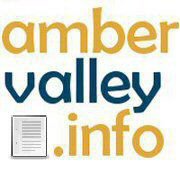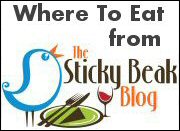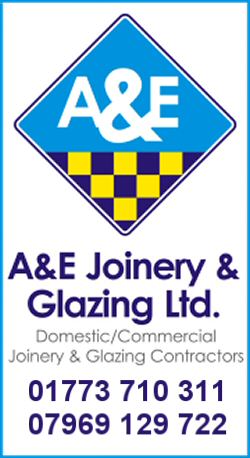The Village Of South Normanton
Categories: Local Information
South Normanton is a medium-sized ex-mining village two miles east of Alfreton, Derbyshire and is approximately 155 metres above sea level at one of the highest points, near St. Michael and All Angels Parish Church near the middle of town
The historic industries of the village were agriculture, stocking, spinning and mining.
Normanton, means ‘the farm of the north men’ or 'Northwegans'.
It was a purely agricultural settlement but added tanning as a secondary industry during medieval times, using the bark of the oak and birch, both plentiful in the area.
In the 18th and 19th Centuries, the main industries were framework knitting and mining.
The knitters, or shiners as they were known from the state of their trouser seats after a 14-hour day sitting at their machines, tended to live in certain areas, around the Dog Pool, along Water Lane and particularly up the narrow alleys around the Old Market place.
South Normanton Colliery closed in 1952, B Winning in 1964 and A Winning in 1969.
Carnfield Hall was for several centuries the seat of the Revel family. The Hall contains a varied and fascinating collection of antique furniture, porcelain and glass, family portraits and much more. It is now a family home shown to the public by the present owners.
The township also includes the housing estate of Broadmeadows although the housing estate is divided between the parishes of South Normanton and Pinxton.
South Normanton is also home to the East Midlands Designer Outlet.
History
Before 1888 South Normanton was a small hamlet concerned with farming activities. There were very few buildings in the area and only a small track road leading to the settlement.
Around 1888 the only houses that were there were a few cottages around the church of St Michael, on the hilltop in South Normanton Centre and the Windmill. the church was also there of course. All the settlement and buildings at this point were clustered around the main road along the roadsides of what is now Church Street and Market Street (a linear settlement). There were farming fields around the arched shaped village.
Around 1921 the village began its main industry of mining. Many people moved in from the surrounding countryside to work in the mines. The wages they earned were better than the crops that they grew in the fields as security so they came to the village in their hundreds. Many terraced houses were built to accommodate them. These were small and cheap housing for the poor people that came, the streets around Peel Street, South Street and Albert Street. More houses were built on Berristow Lane and Carter Lane East. At this time there was one infant school called Hamlet Lane School. The population of the village grew dramatically. Notice on the 1921 map that the 'hamlet' remains.
Around 1957 the government and councils of Britain were concerned about the lot of poor people in the country and began a house building programme to improve the housing. In South Normanton New Street and Hilcote Street were built along with King Street and other such areas. Schools were built to educate the children of the villagers and shops sprang up to serve the community. At the same time some houses were beginning to spring up along the main roads of Market Street and Mansfield Road. The schools included; The Glebe Junior School, New Street Secondary School, The Green Infant School, and The Brigg Infant School. In the period after World War II the council built an estate to give some of the residents of South Normanton the chance to rent very high quality housing. This was known as Council Housing. The streets in South Normanton that were built were along Lansbury Drive. The secondary school (Frederick Gent School) built in 1959 also helped cater for the growing population.
After the 1980s there had been a huge infilling around South Normanton. the areas of Broadmeadows, Rippon Homes and newer housing areas were built. These were higher cost housing for the private market. Major roads had also been built including the M1 Motorway creating easier access to the village and surrounding area for car owners. The East Midlands Designer Outlet (owned by McArthurGlen Group) is located near the edge of the settlement close to the M1.
Clubs, Organisations and Activities
South Normanton has a new thriving community centre which hosts;
The South Normanton 50 Plus Club with weekly meetings on Tuesdays 1:00-3:30 pm
The South Normanton Gardeners Association with meetings normally on the 2nd Monday of the month at 7:30pm
Regular events for young people 11-17 and under 11s run by 'Our House'
The 'Our House Brunch Club' for the over 50s and the disabled, including wheel chair exercise, Wednesdays 10:00 am to 12:30 pm
'SNAP flicks', films generally every two months
Alfreton Ladies Choir
Amateur Radio Club
Alzheimers Cafe
Senior Citizens Luncheon Club
Alfreton Judo Club
Senior Citizens Bingo
Mother & Toddler Group
Alfreton Amateur Radio club (AARC)
South Normanton Scout Group (age 6-14)
Alfreton District Explorer Scouts(age 14-18)
Alfreton District Network (age 18-25)
Elements Youth Choir
Sport
The Village has some sporting facilities. The village was home to South Normanton Athletic F.C.. The village also does a lot of Sunday and Saturday teams like Carnfield FC and South Normanton Colts Under 10's to under 16's. It also hosts the South Normanton School of Boxing which caters for all ages from 10 up.
Broadcasting
The village is in an area which can pick up the television signals of East Midlands, West Midlands, Yorkshire and East Yorkshire and Lincolnshire.
The radio stations that cover the village are Peak FM, Amber Sound FM, Mansfield 103.2 FM, Radio Derby, Radio Nottingham, Trent FM and RAM FM.
Original information taken from Wikipedia
http://en.wikipedia.org/wiki/South_Normanton
Distributed under a Creative Commons licence
http://creativecommons.org/licenses/by-sa/3.0
| Upload Files | Update Listing | Search Similar | Advertise |
|---|






















